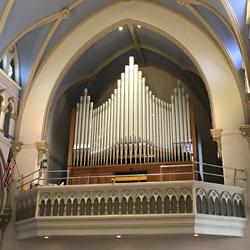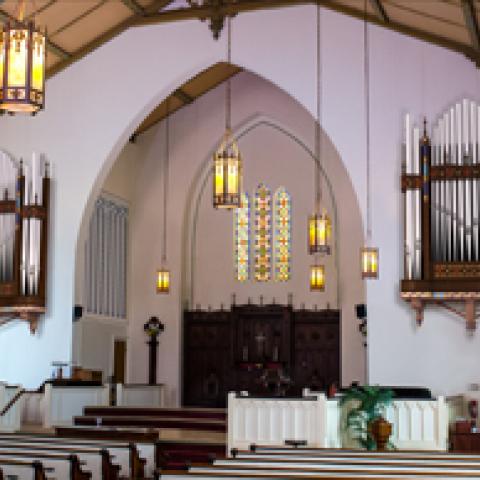
Parsons Pipe Organ Builders, Canandaigua, New York, has restored the Carl Barckhoff organ in St. Mary’s Catholic Church, Auburn, New York. The two-manual, 29-rank, mechanical-action instrument was installed at a purchase price of approximately $6,000 in 1890. Parsons began removing the organ for restoration in March 2016.
An open house was held at the Parsons shop on February 5 for parishioners to hear the organ; a full-sized bus was rented to transport church members to the event. Reassembly in Auburn began later that month. Marylou Davis, Inc., created the stencil design for the façade pipes.
The finished organ was heard publicly for the first time at Mass for Easter Vigil, April 15. It will be blessed and dedicated on May 21. For information: wwwparsonsorgans.com.




